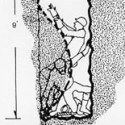|
dreesemonkey posted:Am I going to burn down my house? For the sake of safety, rather than rewiring, switch the breaker to a 15amp. Best case, you never use that much juice and there's no problem. Worst case, you trip it constantly and need to rewire with 12 gauge. also; nice place. My unfinished basement is jealous.
|
|
|
|

|
| # ? May 8, 2024 07:39 |
|
Dragyn posted:For the sake of safety, rather than rewiring, switch the breaker to a 15amp. Worst case is it runs at 19A and the cable heats up and burns his house down. Stuff above drop ceilings is weird. Drop ceilings and acoustic tiles are the worst thing ever. I agree with switching down to a 15A breaker.
|
|
|
|
Thanks guys, that will be much easier. I watched my dad replace a breaker so it should be within my abilities. Do I need to kill the main power when I do this? I know when I remove the breaker from the panel i'm good to go, I just need to unscrew the wires, hook them up to the new breaker, and carefully slide back into place? Just can't remember if I need complete shutdown mode or not. Unfortunately the basement doesn't look nearly as good in person. That paneling is ghastly (and buckled from the damp - no water issues, just the dampness if the humidifier isn't running), but it's not too bad for being young and broke. The basement is actually really large, the picture is about 1/4 of the basement in terms of sqware footage. Someday I'll re-do it with drywall, but then I'm going to have to deal with that loving drop ceiling again  As much as I hate the drop ceiling, it's so nice with a ranch house. Access is just a smelly, brittle, broken panel away. We're going to start redoing some of the rooms upstairs soon and I'm going to wire with CAT5, it's going to be bitchin' to be able to do it so easily
|
|
|
|
You should have your dad replace the breaker, because the fact that you're asking if you should kill the main before working on the panel makes me fear for your life. A lot of electricians will work on a live bus but it's a dumb thing to do unless there's a really compelling reason to keep it live. That's the snarky response, the quick response is yes, turn off the main.
|
|
|
|
Papercut posted:You should have your dad replace the breaker, because the fact that you're asking if you should kill the main before working on the panel makes me fear for your life. A lot of electricians will work on a live bus but it's a dumb thing to do unless there's a really compelling reason to keep it live. Haha, I don't remember having all the power off at the house when he did it, but maybe it's because I have 200amp service to the house? But yea, I'll probably have him do it anyway.
|
|
|
|
dreesemonkey posted:Haha, I don't remember having all the power off at the house when he did it, but maybe it's because I have 200amp service to the house? But yea, I'll probably have him do it anyway. Hahahaha, yea have him do it. 
|
|
|
|
The "best case" accident if you do it live is your screwdriver touches something else and makes a massive goddamn bang and the main breaker trips. What will likely happen if the screwdriver bumps something is you'll get an arc flash. If you don't die from it, the 3rd degree burns, clothing melted to your skin, and months of skin grafts afterwards will make you wish you were dead. A hell of a lot more than 200 amps will make it through that breaker for a split second before it (hopefully) trips. Yeah you CAN do it live and you might get lucky and nothing happens. But this video may help discourage you.
|
|
|
|
If you do decide to do it live, make drat sure you're wearing ALL natural fibers (even the elastic on your underpants will make you wish you were dead if you get a bad arc.) Oh, and wrap all your screwdriver except for the very tip in several layers of electrical tape, to minimize the chance of shorts. Do this anyway, it's just a good practice in general. corgski fucked around with this message at 02:40 on Nov 9, 2010 |
|
|
|
In short, turn off the main breaker first! Beware of the cables feeding the main breaker, though; they're always live and cannot be turned off without having the power company temporarily disconnect your service.
|
|
|
|
Basically, I have 3 sets of these that I want to hook up as under cabinet lights. They have a plug on the end. Is there any problem with cutting the plug off and using some wire nuts to splice it into a switched line (in a junction box) so that I can use a light switch to turn them on and off?
|
|
|
|
The Human Cow posted:Basically, I have 3 sets of these that I want to hook up as under cabinet lights. They have a plug on the end. Is there any problem with cutting the plug off and using some wire nuts to splice it into a switched line (in a junction box) so that I can use a light switch to turn them on and off?
|
|
|
|
grover posted:Why not install switched receptacles, and plug them into the switched receptacles? I could, but they'd never going to be used for anything since I'm planning on putting the boxes in the very top of a couple cabinets. Plus, then I'd have to hide like 10 feet of wire that's attached to the transformer.
|
|
|
|
The Human Cow posted:I could, but they'd never going to be used for anything since I'm planning on putting the boxes in the very top of a couple cabinets. Plus, then I'd have to hide like 10 feet of wire that's attached to the transformer.
|
|
|
|
grover posted:nobody makes a strain relief for zipcord. Hm? I've got plenty of strain reliefs sized for zipcord. It's worth noting though that zipcord is against code for any sort of permanent install, however, so it's only really useful for temporary construction. Get a low profile junction box and use that to hide the excess wire.
|
|
|
|
Sorry, should have qualified that- nobody makes a strain relief box cover. You'd have to jerry-rig one from scratch, which isn't exactly code legal.
|
|
|
|
grover posted:In short, turn off the main breaker first! Beware of the cables feeding the main breaker, though; they're always live and cannot be turned off without having the power company temporarily disconnect your service. Thanks for the info guys, I won't do it live (or probably at all - will wait for my pops to come up). We have a main switch where the power is hooked up at the house away from the actual breaker box so I should be alright there 
|
|
|
|
Ok, I have some weird behavior with a branch I'm helping a friend install. We are replacing aluminum AC in the unfinished basement (the cable runs the outlets in the living room upstairs). We pulled 12/2 from the breaker panel through a 20A breaker, into one junction box in the rafters. This feeds two outlets. A 12ga run comes out of this box into another junction box. This feeds three outlets. One of these 3 outlets is a GFCI (for a fish tank). With the GFCI in the circuit, two of the outlets read 197V and my little "3 neon light" tester has the middle orange and left red neons blinking quickly. There's a 108v potential between neutral and ground on the GFCI. ... the gently caress? Did we just get a bad GFCI? It's only when it's plugged in. And, yes, we're on the right terminals of the GFCI.
|
|
|
|
insta posted:And, yes, we're on the right terminals of the GFCI.
|
|
|
|
grover posted:Are you sure? Also, sounds like you may have a bad neutral bond somewhere. Double-check your wire nuts. You didn't use those back-stabs for your splices, I hope! Yep. The GFCI's "downstream" terminals are still covered by the warning sticker. All the splices are done in the basement, inside of plastic junction boxes. A single NM-B cable feeds into each receptacle box, where the wires are stabbed into the back of the outlet. The splices are either two 12's and two 14's, or one 12 and three 14's. In both cases the wire nut sits snugly, takes about 4 twists to secure, but we occasionally missed a wire and had to redo the wire nut.
|
|
|
|
If you plug the tester into any of the other outlets, how does it read? Still sounds to me like a poorly connected (open) neutral. Normal receptacles have no connection between hot and ground, but GFCI receptacles have some circuitry. If the neutral is open, you will read voltage on it, due to voltage through the GFCI. The GFCI will fail to function, as it cannot create a circuit. If a bad neutral connection is the problem you'd see the same thing if anything (a light or something) is plugged into any of the outlets that show higher voltage.
|
|
|
|
grover posted:If you plug the tester into any of the other outlets, how does it read? Still sounds to me like a poorly connected (open) neutral. Normal receptacles have no connection between hot and ground, but GFCI receptacles have some circuitry. If the neutral is open, you will read voltage on it, due to voltage through the GFCI. The GFCI will fail to function, as it cannot create a circuit. If a bad neutral connection is the problem you'd see the same thing if anything (a light or something) is plugged into any of the outlets that show higher voltage. Two of the total 5 outlets exhibited the weird blinky behavior, and what's more strange is there was one per junction box. The GFCI was illuminated properly, and furthermore the "test GFCI" button on the plug actually worked. Are you inclined to think that the GFCI outlet is not bad, and we should try re-nutting the junctions in the basement?
|
|
|
|
Hi guys, I was going to install a fancy programmable timer switch for my mother's front porch light so she doesn't leave it on all day when she leaves for work. The instructions are written in 1 point font and are incredibly vague so I want to make sure that this switch is compatible with the wiring that's in the box. The switch that's installed now has 2 black wires and a ground and all the whites(its a double gang box) are connected together and shoved in the back. The new switch/timer has black, red and white (with green for ground). If I understand correctly, I connect the white from the timer to all the other whites, black to black and red to the other black?
|
|
|
|
Owen Wilsons Nose posted:If I understand correctly, I connect the white from the timer to all the other whites, black to black and red to the other black?
|
|
|
|
Thank you mister. Works like a charm. I guess I had a 50/50 shot on getting the load side of the blacks correct.
|
|
|
|
I am looking to add a 20amp circuit to my panel for a fridge in my garage and thus far I have run the 12/2 to the new installed outlet in the garage, pulled 12/2 over to the laundry room where the panel is, but I am a bit lost on how to get down into the panel and connect up. Obviously I drill the header cap for the wall, I could fish tape the wide down to the panel and pop out a knock out. It is the installation of the wiring that I am a bit confused on. There is a bar for ground, simple enough, hot(black) goes to the breaker itself and there is another bar on the right side of the panel where all the neutral(whites) are terminated. I cannot really tell if the position on the bar relates to the breaker location or it is completely independent. I have a guy set to come out tomorrow afternoon to finish up, but if I could knock this out myself I could move forward with my kegerator project.
|
|
|
|
routenull0 posted:I am looking to add a 20amp circuit to my panel for a fridge in my garage and thus far I have run the 12/2 to the new installed outlet in the garage, pulled 12/2 over to the laundry room where the panel is, but I am a bit lost on how to get down into the panel and connect up. Ground the neutral anywhere on the neutral bar, and the ground anywhere on the ground bar. If this panel has the main neutral/ground bond for the house, neutral and ground may share a single bar.
|
|
|
|
routenull0 posted:I cannot really tell if the position on the bar relates to the breaker location or it is completely independent. Grover's right, be careful fishing that wire down to the panel, especially if you use a steel fish tape. As for your positioning question, there's no code specifying which screw terminal that you need to attach a neutral or ground to on its respective bar. You could try and figure out if the original electrician used some method for positioning your original circuits and try to match it, but it's your call.
|
|
|
|
What are the rules about 220v in rooms that aren't utility rooms? I'm curious about potentially pulling some 220v to my computer room, and installing it against the one wall that all the computers are plugged into.
|
|
|
|
insta posted:What are the rules about 220v in rooms that aren't utility rooms? I'm curious about potentially pulling some 220v to my computer room, and installing it against the one wall that all the computers are plugged into.
|
|
|
|
insta posted:What are the rules about 220v in rooms that aren't utility rooms? I'm curious about potentially pulling some 220v to my computer room, and installing it against the one wall that all the computers are plugged into. Nothing wrong with that, but I am curious. Why do you need 220v in your computer room?
|
|
|
|
RedReverend posted:Nothing wrong with that, but I am curious. Why do you need 220v in your computer room? Server equipment or a large AC I'd guess.
|
|
|
|
TacoHavoc posted:Server equipment or a large AC I'd guess. And here I was looking like a dumbass thinking huge industrial adult pleasure toy seen in Top Secret!
|
|
|
|
TacoHavoc posted:Server equipment or a large AC I'd guess. Nah, in fact it's just 3 PCs -- mine, hers, fileserver. The room has a sag anyway because it's 14ga farthest away from the breaker, so I'd be happy either pulling 12ga to it or switching it for 220. All of the PCs and monitors can handle 220, and nearly all switchmode power supplies are more efficient (read: cooler) when using 220 as an input.
|
|
|
|
insta posted:Nah, in fact it's just 3 PCs -- mine, hers, fileserver. The room has a sag anyway because it's 14ga farthest away from the breaker, so I'd be happy either pulling 12ga to it or switching it for 220. All of the PCs and monitors can handle 220, and nearly all switchmode power supplies are more efficient (read: cooler) when using 220 as an input. I hadn't thought about it, but that's pretty clever. The only funky part would be finding 220V plugs for your computers.
|
|
|
|
babyeatingpsychopath posted:I hadn't thought about it, but that's pretty clever. The only funky part would be finding 220V plugs for your computers. Hmm, well, since there's apparently not a rule against it ... I've found dual NEMA 6-15 outlets, and NEMA 6-15 to IEC 320N power cables. What're the rules for using normal 12/2ga wire? Just tape up the neutral to mark it as hot?
|
|
|
|
insta posted:Hmm, well, since there's apparently not a rule against it ... Yep. Just wrap the end of the neutral with some tape to reidentify it and you are good.
|
|
|
|
Would it be kosher to branch off an existing 30A 240V electric dryer circuit to install another outlet for future garage use? Neither items would ever be used at the same time of course.
|
|
|
|
Just bought some desk lamps and I was surprised to see the following warning label by the manufacturer: Maximum 60W incandescent or maximum 16W CFL ! If there is a concern about heat and wire diameter I would expect the limit to be 60W - no matter what type of bulb. Is there an issue with power spikes maybe?
|
|
|
|
I can't think of a single reason for them to do this. If there is truly no reason someone can come up with for that it's somewhat scary when something that plugs is is made by folks who don't understand electricity.
|
|
|
|

|
| # ? May 8, 2024 07:39 |
|
dietcokefiend posted:Would it be kosher to branch off an existing 30A 240V electric dryer circuit to install another outlet for future garage use? Neither items would ever be used at the same time of course. In practice, though, it's very difficult for inspectors to enforce because they can only inspect the initial installation, not what people plug into them. Cross_ posted:Just bought some desk lamps and I was surprised to see the following warning label by the manufacturer: Maximum 60W incandescent or maximum 16W CFL ! grover fucked around with this message at 16:09 on Dec 11, 2010 |
|
|

















